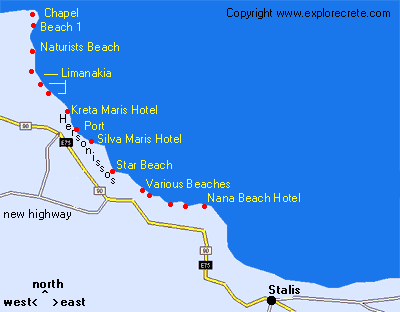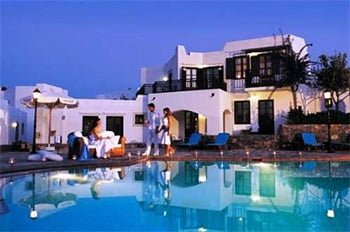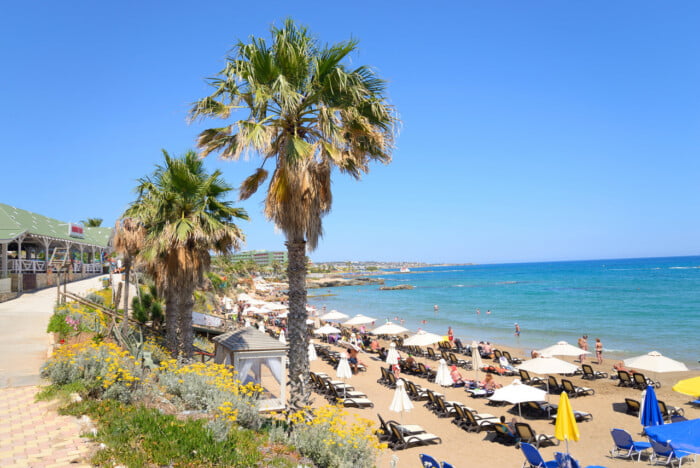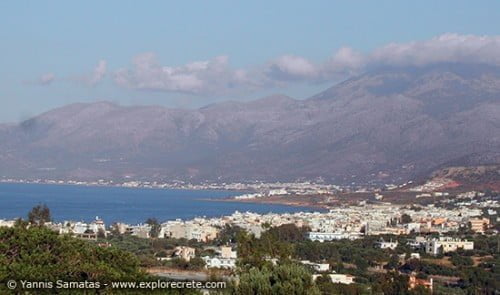History of Hersonissos, ancient Cherronesos
History of Hersonissos
Ancient Herronissos
The history of Hersonissos begins in Minoan Crete, when the city of Cherronesos or Chersonesos stood on the site of the present resort. Pottery and traces of habitation have been discovered, both in Hersonissos itself and the small hill of Kastri above the harbour, and around Hersonissos, at Anissaras to the west and near Stalis to the east.
Following the destruction of the Minoan civilisation, Hersonissos continued to be inhabited. In Hellenistic times it became the port of the Dorian city of Lyttos inland, which had become very powerful. The area was governed by Lyttos but Hersonissos retained a limited independence and minted its own coinage depicting a ship’s prow.
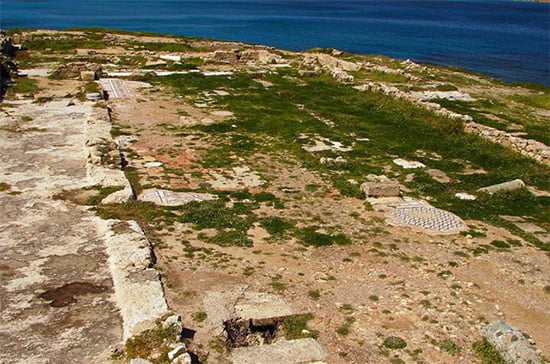
From that period dates a wall on Kastri Hill, above the harbour and the small church of Agia Paraskevi, which you see as soon as you walk down the Hersonissos beach road. It is though that here stood a sacred acropolis with a sanctuary dedicated to Artemis Britomartys.
The cemetery of 30 rock-cut tombs, recently excavated in modern-day Hersonissos, also belongs to the Hellenistic period. In the tombs were found rich grave goods, including many vessels of various shapes and sizes, gold and silver coins and much jewellery. The cemetery was certainly much larger than the excavated part, but the rest is buried under building foundations.
Hersonissos in the Roman period
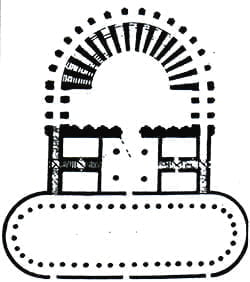
Hersonissos flourished in the Roman period and the first centuries of the Byzantine Empire. The city grew, became more powerful than Lyttos and acquired its own theatre, aqueduct and public baths.
The aqueduct which brought water to Hersonissos from mountain villages to the south is thought to have been 14 kilometres long, while an underground reservoir has also been found, measuring 58 metres long, 22 metres wide and 5.5 metres deep. This shows that Hersonissos had grown into quite a large city during Roman times.
Even more impressive was the Roman theatre of Hersonissos, which was unfortunately destroyed in 1897, when the local inhabitants were allowed to take the stones for building material.
Today, plans are underway to excavate and reveal the monument in full.
Hersonissos from 1900 to the present
Later on, the fear of pirate raids forced the inhabitants to move far inland and establish the village of Αno Hersonissos. The neighbouring villages of Piskopiano and Koutouloufari were probably founded at the same time.
Thus, for many centuries seaside Hersonissos fell into obscurity, and the 1900 census only recorded 133 inhabitants. Shortly afterwards a gendarmerie and a sub-customs house were established to cover the needs of the small harbour, from which olive oil, carobs, leather and other local products were exported.
Things stayed the same for many years until the 1960s, when Hersonissos was discovered by tourism and the first hotels were built. Tourist development continued over the following decades, and today Hersonissos is still growing, welcoming and entertaining more and more tourists every summer.
© explorecrete.com All Rights Reserved. Reproduction or copying without permission is prohibited.

